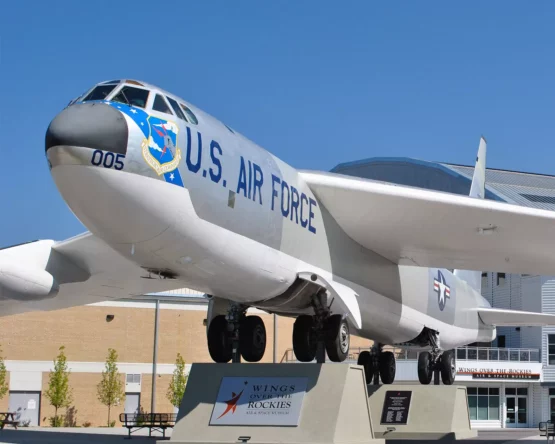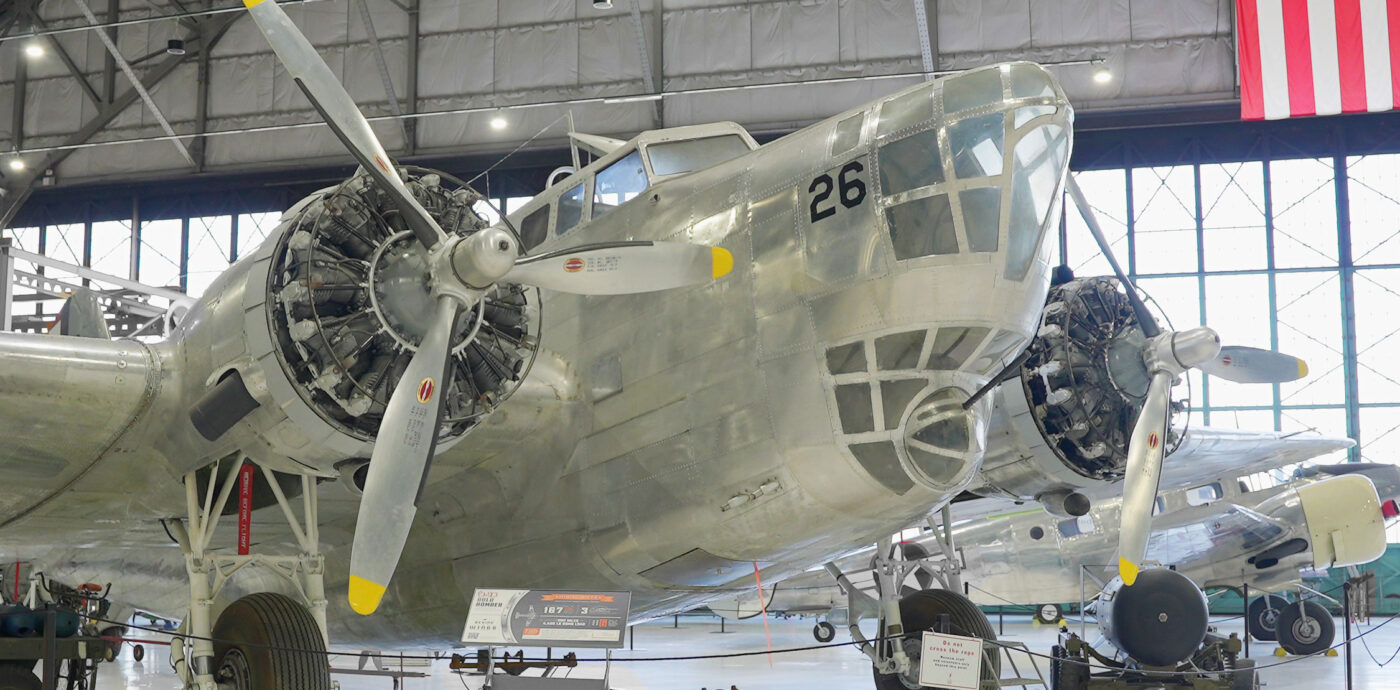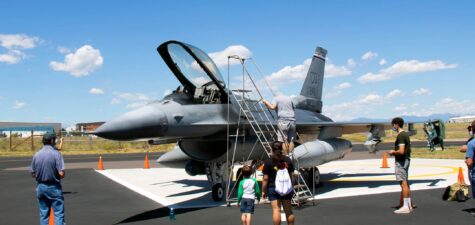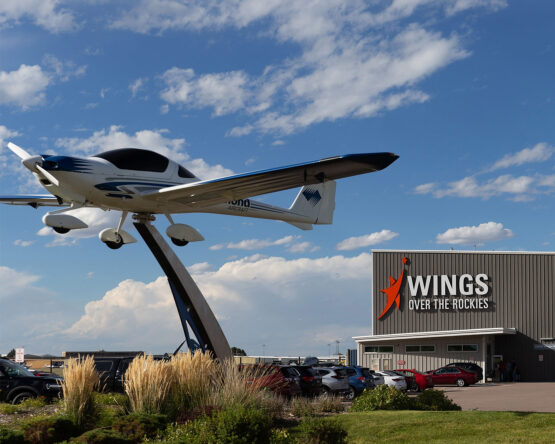The Douglas B-18 Bolo has a long history with Lowry Air Force Base and it is appropriate that Wings Over the Rockies displays one of the five remaining B-18s in the world.
Douglas Aircraft created the B-18 in response to a 1934 Army request for a new bomber that could carry twice the load at twice the range of its B-10. The Army chose the B-18 for production after the competing design from Boeing crashed. (That Boeing design would later become the legendary B-17 after Boeing added a new innovation that would have prevented the crash—the cockpit checklist… which has become standard equipment for all aircraft!)
Douglas gave its DC-2 airliner a deeper fuselage to house the bomb bay, extended the wings, and added nose and ventral gun turrets. The B-18 entered service with the Army in 1937, and a B-18 was the first airplane to land on the new concrete runways at Lowry Field in 1940.
When the United States entered World War II, B-18s were obsolete as front-line bombers, but the Army used B-18s to train bombardiers, navigators, and pilots. Later in the war, the US Army and Royal Canadian Air Force used them for anti-submarine patrol and as transports.
The B-18 Bolo on display at Wings has a colorful history. After training bombardiers during World War II, civilian owners used it as a cargo aircraft, aerial sprayer, and survey aircraft. In 1959 it was caught running guns to Fidel Castro for the Cuban revolution and confiscated by the US Border Patrol.
The National Museum of the US Air Force loaned the B-18 to Wings Over the Rockies in 1990, and our Restorations team has restored it to its prewar bomber configuration.
Aircraft specifications:
Wingspan: 89 ft 6 in (27.3 m)
Length: 57 ft 10 in (17.7 m)
Maximum speed: 216 mph (348 km/h)
Bomb load: 4,400 lb (1,996 kg)
Engines: two Wright R-1820-53 radial engines, 1,000 hp (746 kW) each
 Air & Space Museum
Air & Space Museum
















